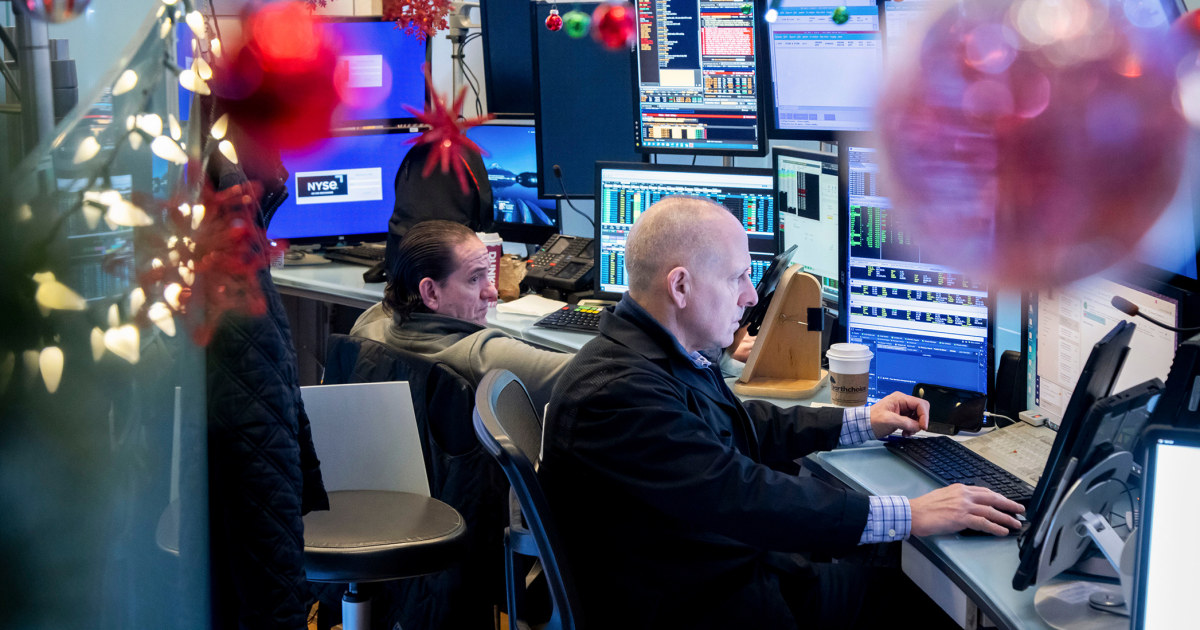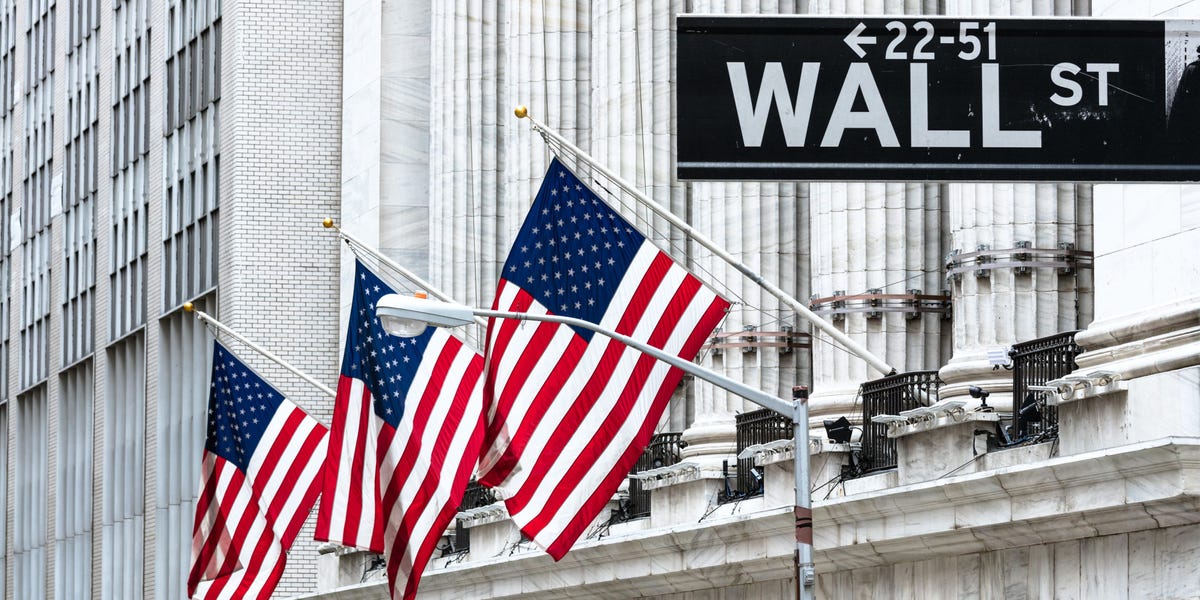The Dow Jones Industrial Average has been on a downward slide for seven consecutive days, marking its longest losing streak since 2020. This period of volatility has caused concern among investors, many of whom are left questioning what this prolonged downturn signifies for the broader economy and their portfolios. In this article, we will delve deeper into the factors contributing to the Dow’s current struggles, the implications for investors, and what might lie ahead for the stock market in the coming months.
Understanding the Current Downtrend in the Dow
The Dow Jones Industrial Average, a key benchmark of the U.S. stock market, has struggled over the past week, with consistent declines in its daily closing figures. The streak began in early December 2024 and has since captured the attention of financial analysts, traders, and investors alike. To fully understand the significance of this losing streak, it’s important to examine both short-term and long-term factors that are influencing market conditions.
Economic Data and Market Sentiment
The Dow’s recent downturn can be partly attributed to a mix of macroeconomic factors, including concerns over inflation, interest rates, and global economic growth. In particular, the Federal Reserve’s monetary policy decisions have been a major point of focus. Investors have reacted to signals that the Fed might maintain or even raise interest rates in response to persistent inflationary pressures. Higher rates tend to make borrowing more expensive, which can dampen business investment and consumer spending, ultimately weighing on corporate earnings.
Furthermore, there has been growing unease regarding global economic conditions. Issues such as geopolitical instability, including tensions in Eastern Europe and Asia, combined with supply chain disruptions, have contributed to fears that the global economy may face a prolonged slowdown. As a result, investors have been more cautious, and the stock market has been reflecting these concerns in the form of heightened volatility.
Sector-Specific Weaknesses
Within the Dow, specific sectors have been driving the recent losses. Technology stocks, in particular, have seen a significant pullback. After an impressive performance in the early months of 2024, tech stocks have faced heightened scrutiny as interest rates rise. Growth stocks, which rely on future earnings potential, tend to suffer when borrowing costs increase. The Dow’s tech-heavy components, including companies like Apple and Microsoft, have struggled to maintain their upward momentum.
Other sectors, such as consumer discretionary and industrials, have also shown signs of weakness, as consumers face higher costs due to inflation and companies deal with rising operational expenses. In contrast, defensive sectors such as utilities and healthcare have performed relatively better, reflecting investors’ preference for more stable, less cyclical investments during times of uncertainty.
Investor Reactions: Risk Appetite and Portfolio Strategies
As the Dow’s losing streak continues, investors are grappling with how to adjust their strategies. Many are considering whether to adopt a more defensive posture or remain invested in hopes of a market rebound. Understanding the psychology of investors during periods of market stress is crucial to analyzing their behavior and the broader market trends.
Flight to Safety
One common reaction to market volatility is a “flight to safety,” where investors move their assets into safer investments such as government bonds or precious metals like gold. In the face of uncertainty, these assets are seen as less risky and often serve as a hedge against inflation and market turmoil. The rise in bond yields, however, presents a challenge to equities, as investors weigh the relative attractiveness of fixed-income securities compared to stocks.
Moreover, as inflation remains a key concern, investors are increasingly looking for inflation-protected securities (such as Treasury Inflation-Protected Securities or TIPS) to safeguard their purchasing power. These instruments are designed to adjust their value in response to changes in inflation, making them an attractive option for investors looking for protection in turbulent times.
Long-Term Perspective: Staying the Course or Rebalancing?
Despite the short-term volatility, many analysts suggest that investors with a long-term horizon may not need to panic. Historically, the stock market has shown resilience, with periods of loss often followed by recovery. For those who have built diversified portfolios, staying the course might be the best approach, as market downturns can present opportunities to buy quality stocks at lower prices.
However, for investors who are nearing retirement or have a lower risk tolerance, a more cautious approach may be necessary. Rebalancing portfolios to reduce exposure to more volatile sectors or increasing holdings in defensive assets can help mitigate risk during uncertain times. Working with a financial advisor to assess personal financial goals and risk tolerance is an important step to take during periods of market downturn.
Broader Market Implications
The Dow’s recent losing streak doesn’t just affect individual investors—it also has broader implications for the financial markets and the economy. Prolonged market declines can erode consumer confidence and slow down economic growth, especially when investors perceive that corporate earnings may falter due to external pressures.
Impact on Corporate Earnings
One of the main drivers of stock prices is corporate earnings, and when the market starts to slide, concerns over future profitability grow. If the trend continues, companies may face greater difficulty achieving revenue and profit growth, particularly if consumer spending slows or operational costs rise due to factors like energy prices or labor shortages. This can lead to a downward revision of earnings forecasts, which can further dampen investor sentiment and prolong market declines.
Psychological Effects on the Broader Economy
Market declines can also have a psychological effect on the broader economy. Consumer spending, which accounts for a significant portion of GDP, can be directly influenced by the performance of the stock market. When stock prices fall, especially in a sustained downturn, consumers may feel less wealthy and may reduce spending as a result. This, in turn, can create a feedback loop that further exacerbates the downturn, creating additional headwinds for the economy.
What Lies Ahead for the Market?
While it is difficult to predict the exact direction of the market, analysts are keeping a close eye on several key indicators that may offer clues. First, investors will be watching the Federal Reserve’s stance on interest rates. If inflation continues to ease, there may be a case for the Fed to adopt a more dovish stance, which could provide support to the stock market.
Secondly, corporate earnings reports will be critical in determining whether companies are able to weather the storm of rising costs and potential economic slowdown. Positive earnings results could offer reassurance to investors and help stabilize the market.
Technological and Global Economic Shifts
On a longer-term scale, the market will likely continue to be shaped by technological advancements and changes in global trade dynamics. As sectors like artificial intelligence, clean energy, and biotechnology evolve, investors may shift their focus to these high-growth areas, even as more traditional sectors face headwinds. Additionally, shifts in global trade policies and supply chain dynamics could have profound effects on the global economy and financial markets.
The Dow’s recent streak of losses underscores the inherent volatility of the stock market, particularly during periods of economic uncertainty. While short-term declines can be unsettling, they are often part of the natural market cycle. For investors, the key is to stay informed, be proactive in managing risk, and maintain a long-term perspective. By doing so, they can better navigate the complexities of the current market and position themselves for future growth.
For more information on navigating volatile markets and adjusting your investment strategy, visit our comprehensive guide on portfolio management.
To stay up-to-date with the latest market trends, check out CNBC for real-time news and insights.
See more CNBC Network



